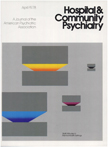Characteristics of Staff Burnout in Mental Health Settings
Abstract
To determine the characteristics of staff burnout and ways of coping with it, the authors gathered data on institution-related and personal variables for 76 staff members in various mental health facilities in the San Francisco area. A correlational analysis revealed a large number of statistically significant findings. For instance, the longer staff had worked in the mental health field, the less they liked working with patients, the less successful they felt with them, and the less humanistic were their attitudes toward mental illness. The authors present recommendations for reducing staff stress and subsequent burnout, including allowing more chances for temporary withdrawal from direct patient care and changing the function of staff meetings.
Access content
To read the fulltext, please use one of the options below to sign in or purchase access.- Personal login
- Institutional Login
- Sign in via OpenAthens
- Register for access
-
Please login/register if you wish to pair your device and check access availability.
Not a subscriber?
PsychiatryOnline subscription options offer access to the DSM-5 library, books, journals, CME, and patient resources. This all-in-one virtual library provides psychiatrists and mental health professionals with key resources for diagnosis, treatment, research, and professional development.
Need more help? PsychiatryOnline Customer Service may be reached by emailing [email protected] or by calling 800-368-5777 (in the U.S.) or 703-907-7322 (outside the U.S.).



